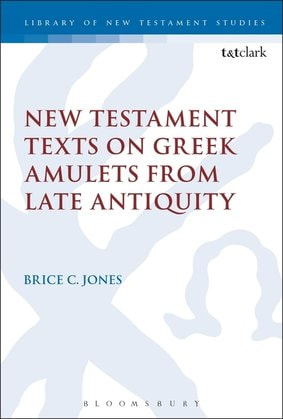|
P.Oxy. LXV 4446 (P107) is a tiny papyrus fragment dated to the 3rd cent. CE that preserves portions of the Gospel of John 17:1-2, 11. Interestingly, this fragment offers support for a variant in John 17:1b, yet it is not listed in the critical apparatus of Nestle-Aland's Novum Testamentum Graece (NA28). The text of John 17:1b that is printed in the NA27 and NA28 reads as follows: δόξασόν σου τὸν υἱόν, ἵνα ὁ υἱὸς δοξάσῃ σέ There are three variation units in John 17:1, but the one that concerns us is ⸂ὁ υἱὸς⸃. The NA28 apparatus lists the following variants and their supporting witnesses: 1. ὁ υἱός σου A D K Θ 1 579 l 844 lat sy sa ly bo 2. καὶ ὁ υἱός σου (–C2) C2.3 L N Γ Δ Ψ f^13 33 565s 700 892s 1241 1424 Maj q vg^mss; Or^pt 3. ὁ υἱὸς א B C* W 0109 0301 d e ff2 pbo; Or^pt The problem pertains to either the omission or addition of two words: σου and καί. The shorter reading is the preferred reading in the NA27/NA28. In his textual commentary, Bruce Metzger stated that "It is difficult to decide whether σου was omitted because copyists thought it superfluous, or whether it was added in order to enhance the solemnity of the style. On the basis of the weight of P60^vid, א, B, C*, W 0109 it^d,e, ff2, q al, the shorter reading was preferred" (A Textual Commentary on the Greek New Testament [2nd ed; Stuttgart: Deutsche Bibelgesellschaft, 1994], 212). The support of P60^vid was removed from the 27th and 28th edition because the reading ὁ υἱός is not preserved in P60; it is only reconstructed as such on the basis of the line length. I would lean toward the view that σου is secondary, but what about καί? Line 4 of the recto of P107 reads as follows: τον υν] ινα κ[αι ο υς δ]ο̣ξ[αση σε] The kappa of καί is clear: There are traces of ink near the top right corner of kappa, which I take to be the oblique extension of alpha. Given this reading, I wondered why P107 was not listed in support of variant #2 (καὶ ὁ υἱός σου) without the addition of σου. Prof. Klaus Wachtel has informed me that the reason the INTF did not include P107 is because the papyrus is too faint to assign it to either καὶ ὁ υἱός or καὶ ὁ υἱός σου. In my opinion, there is no room for σου. In fact, given the size of the surrounding letters, I think it is impossible σου was read in this papyrus, unless it was added interlinearly or by abbreviation (unlikely). However, since we have no way of knowing, I think we should take P107 as evidence for the reading καὶ ὁ υἱός. Prof. Wachtel tells me that the INTF may consider rearranging the apparatus here by making the addition of καί a separate variant and listing P107^vid as a supporting witness. So, be on the look out for this change in the next addition of the Greek New Testament. What is clear is that καί is read in P107 and so it should be noted in the apparatus.
I wonder: do we have a singular reading here in P107? Does anyone know of any other MS with this reading?
2 Comments
Will Varner
link
10/2/2013 03:46:53 pm
Isn't it in the CNTTS apparatus?
Reply
Brice C. Jones
link
10/3/2013 04:00:59 am
Yes, it is read in the CNTTS apparatus as well as in the transcription of P107 in the VMR database.
Reply
Your comment will be posted after it is approved.
Leave a Reply. |

Available at Amazon!
Archives
January 2021
Categories
All
|